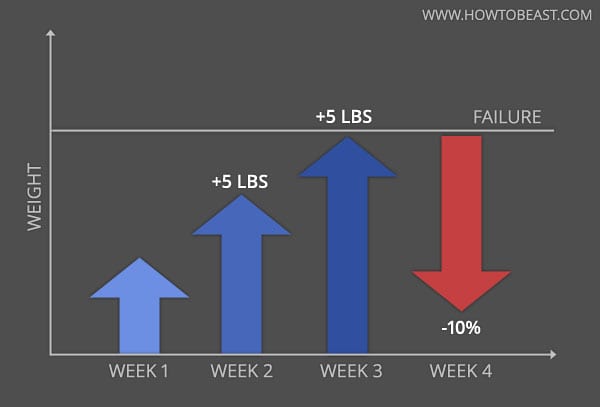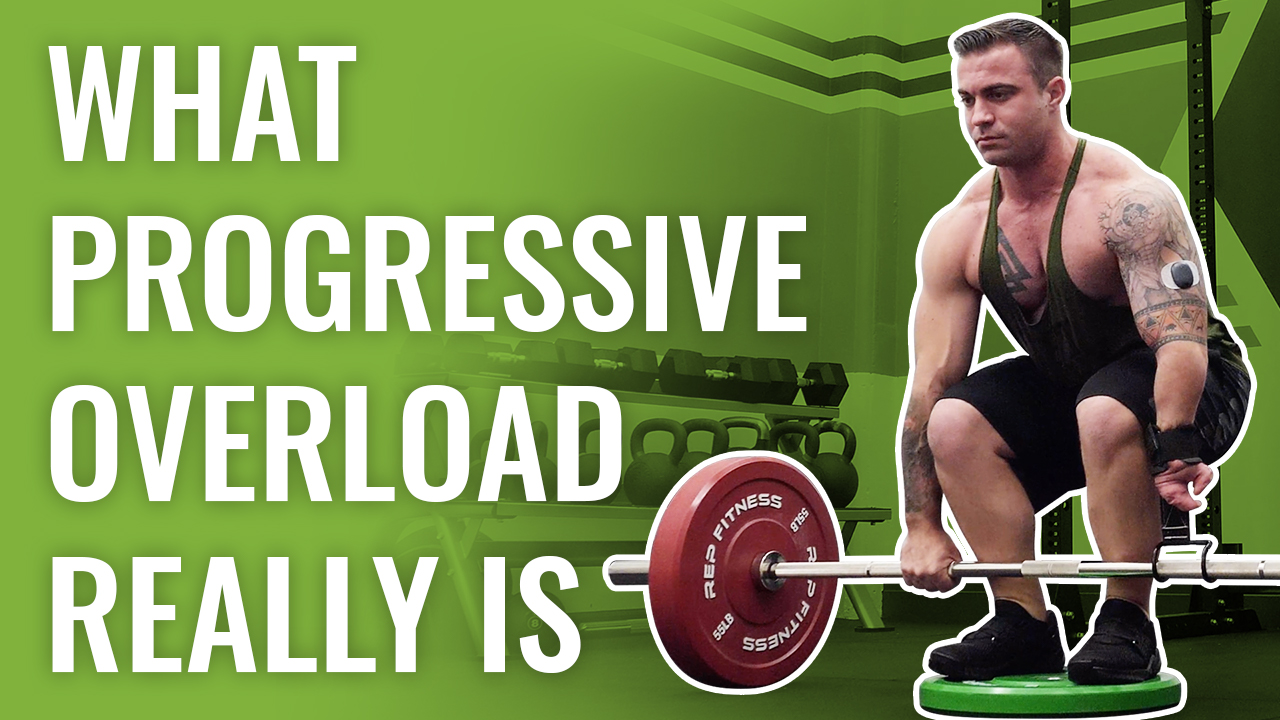
NOTE (1): Progressive overload is used here exclusively in the context of strength training but the concept applies to any training modality, such as cardio.

When you can do regular push-ups with a powerlifting strength band for however many sets and reps, advance to decline push-ups. When you can do regular push-ups for however many sets and reps, advance to performing regular push-ups with a powerlifting strength band across your back for added resistance. 6 For example, when you can do modified push-ups from your knees for however many sets and reps, advance to regular push-ups. increasing the range of motion of an exercise 5 For example, when you’re able to squat parallel with a certain amount of weight for every rep of every set, work on squatting that same weight ass to grass. You may also elect to just increase the length of time you hold an exercise for at the top or bottom of the movement, as doing so prolongs the amount of stress that the target muscle is under. Once that becomes easy, take 4 seconds to lower yourself and/or adjust the pace of one of the other phases. changing tempo 4 For example, rather than it taking you one second to complete one rep of squats, take 3 seconds to lower yourself, pause for 1 second at the bottom, and then take 2 seconds to return to the starting position. boosting intensity by taking shorter rest periods between sets 3 For example, instead of taking a one-minute break before the next set, rest for 45 seconds. Instead of doing 3 sets of 8 reps, you can do 4 sets of 8, then 5 sets of 8, etc. Then 10 the next time you can perform all 3 sets for 9 reps. increasing training volume by completing more reps or sets 2 For example, when you can perform 3 sets of an exercise for 8 reps each, then go for 9. When that happens, the general advice is to increase the weight in increments of 5 to 10 pounds for upper-body exercises and 10 to 20 pounds for lower-body movements. Some of these progressive overload techniques include lifting heavier weights 1 If you can complete two or more reps in the last set in two consecutive workouts for any given exercise, then it’s time to add more weight.

There are a variety of ways to increase the stress placed on the body over time when strength training. The answer is with progressive overload, a principle that calls for improving the difficulty of an exercise by gradually placing greater-than-normal demands on the body from workout to workout. Given that, how do you prevent your body from plateauing and instead have it continue making adaptations in response to a particular exercise? Only by exceeding the current capacity of your muscles does change occur. When that happens, when an exercise is no longer challenging, the body stops experiencing the benefits the exercise once provided when it used to be difficult because the body no longer has a reason to make a training adaptation in response to the stress.

Ha, you shouldn’t do the same shit each and every workout because when performing the same exercise over and over again without changing anything else, the exercise becomes easier as your body becomes more efficient at executing it.

So apart from your exercise movements, why shouldn’t you do the same shit each and every workout ? That’s a good question that only cements that you need to have progressive overload explained to you! While it may be good that you’re doing the same exercises and have so far resisted the temptation to switch them up every single time you work out, it’s not so good that virtually everything else in your routine is identical from week to week, month to month, year to year, decade to decade, and millennia to millennia if you happen to be immortal. Well, are you working out the same way you did when you first began working out? Like, your strength hasn’t budged in the weight room since lord knows how long?


 0 kommentar(er)
0 kommentar(er)
